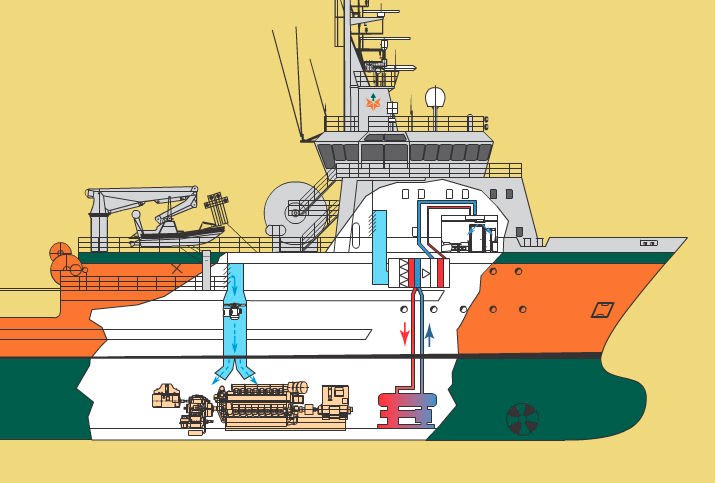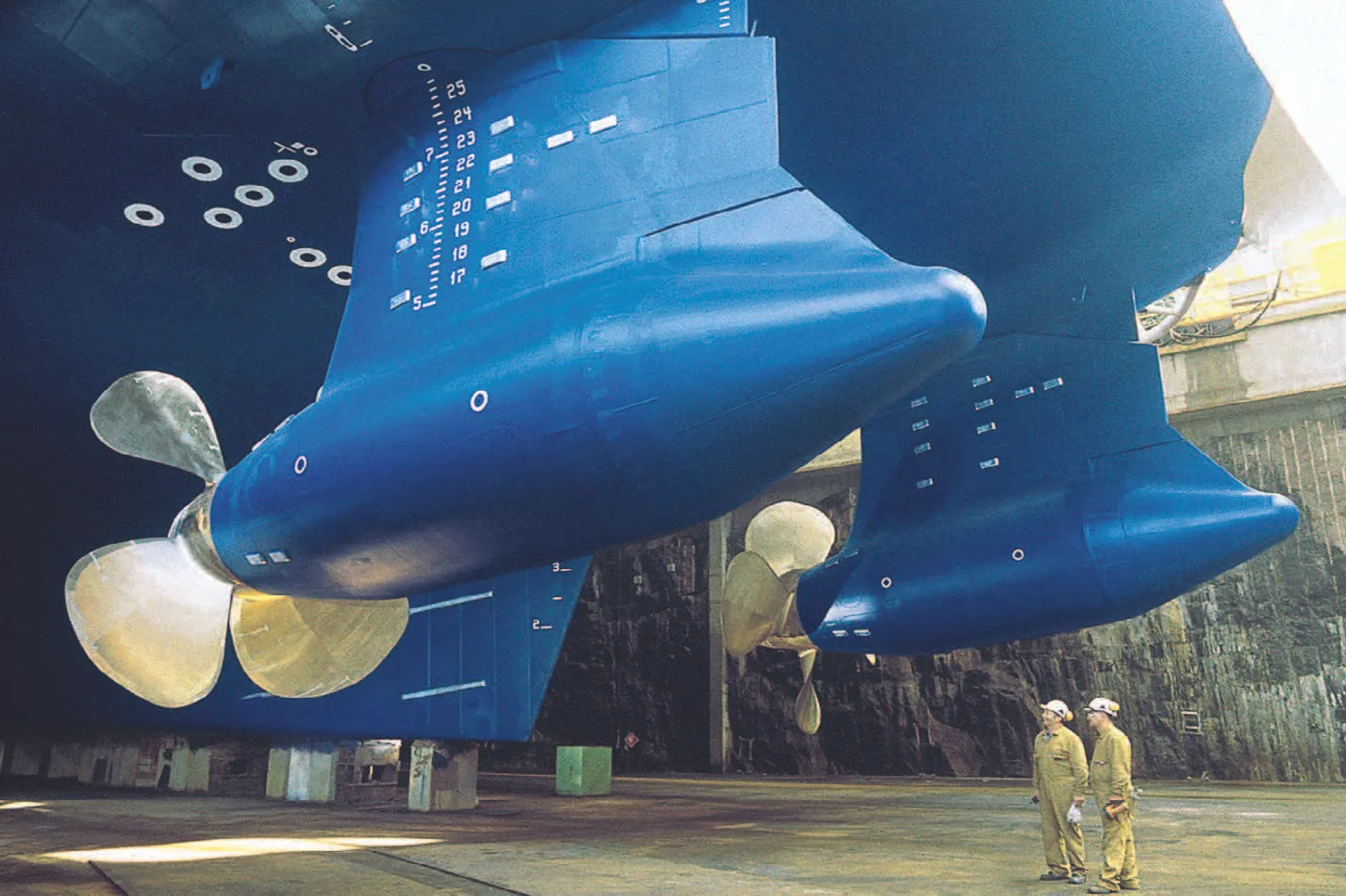
Contents
- Introduction to Air Conditioning on Ships
- Importance of Air Conditioning on Maritime Vessels
- Components of Shipboard Air Conditioning Systems
- 3.1 Compressor
- 3.2 Condenser
- 3.3 Expansion Valve
- 4.4 Evaporator
- 3.5 Air Handling Units
- 3.6 Ductwork and Ventilation
- Refrigeration Systems on Ships
- 4.1 Cold Rooms
- 4.2 Freezer Rooms
- Maintenance and Servicing of Maritime Air Conditioning and Refrigeration Systems
- Popular Manufacturers and Advised Run Hours
- Frequently Found Problems and Solutions
- Frequently Asked Questions about Maritime Refrigeration Plant
- Conclusion
- References
1. Introduction to Air Conditioning on Ships
Air conditioning on ships is a critical component for maintaining comfortable living and working conditions for the crew, passengers, and cargo. It ensures the right temperature and humidity levels, enhancing the operational efficiency and safety of maritime vessels.
2. Importance of Air Conditioning on Maritime Vessels
Air conditioning is essential on maritime vessels for several reasons:
- Comfort: Provides a comfortable environment for crew and passengers, crucial for long voyages.
- Health and Safety: Prevents heat-related illnesses and maintains air quality.
- Cargo Preservation: Many types of cargo, including food and pharmaceuticals, require specific temperature conditions to prevent spoilage.
- Operational Efficiency: Electronic equipment and machinery operate more efficiently and reliably in controlled temperature environments.
3. Components of Shipboard Air Conditioning Systems
A typical shipboard air conditioning system includes several key components:
3.1 Compressor
- Function: The compressor is the heart of the air conditioning system, responsible for compressing the refrigerant and circulating it through the system.
- Technical Details: Converts low-pressure refrigerant gas into high-pressure gas, increasing its temperature. Types include reciprocating, screw, and centrifugal compressors.
- Use: Essential for the refrigeration cycle by increasing the refrigerant pressure and temperature.
3.2 Condenser
- Function: The condenser removes heat from the refrigerant, causing it to change from a high-pressure gas to a high-pressure liquid.
- Technical Details: Typically, air-cooled or water-cooled. Uses seawater or freshwater in marine applications.
- Use: Dissipates heat into the surrounding environment, often using seawater as a cooling medium in maritime systems.
3.3 Expansion Valve
- Function: The expansion valve reduces the pressure of the refrigerant, causing it to cool further.
- Technical Details: Can be thermostatic or electronic. Controls the flow rate based on the cooling demand.
- Use: Regulates the refrigerant flow into the evaporator to ensure optimal cooling.
3.4 Evaporator
- Function: The evaporator absorbs heat from the surrounding air, causing the refrigerant to evaporate and cool the air.
- Technical Details: The evaporator coil is located inside the air handling unit or directly in the air stream.
- Use: Transfers heat from the air to the refrigerant, providing the cooling effect.
3.5 Air Handling Units (AHUs)
- Function: Distributes conditioned air throughout the ship.
- Technical Details: Comprises fans, filters, coils (for heating and cooling), and humidifiers.
- Use: Maintains air quality and temperature, ensuring a comfortable environment.
3.6 Ductwork and Ventilation
- Function: Channels the flow of conditioned air to various parts of the ship.
- Technical Details: Made of insulated metal or flexible duct material. Includes dampers and diffusers for air distribution control.
- Use: Ensures even distribution of air and maintains air quality throughout the vessel.
4. Refrigeration Systems on Ships
Refrigeration systems on ships are crucial for preserving perishable goods. They consist of:
4.1 Cold Rooms
- Function: Maintain temperatures just above freezing for the storage of perishable items.
- Technical Details: Insulated walls, doors with airtight seals, evaporator units, and temperature control systems.
- Use: Store fruits, vegetables, dairy products, and other perishable goods.
4.2 Freezer Rooms
- Function: Maintain temperatures below freezing for long-term storage.
- Technical Details: Similar to cold rooms but with more powerful refrigeration units, insulation, and lower temperature settings.
- Use: Store meat, fish, and other items requiring freezing temperatures.
5. Maintenance and Servicing of Maritime Air Conditioning and Refrigeration Systems
Proper maintenance is crucial to ensure the efficiency and longevity of air conditioning and refrigeration systems on ships:
- Regular Inspections: Check all components for wear and tear, leaks, and proper operation.
- Cleaning: Clean filters, coils, and ductwork to maintain airflow and efficiency.
- Lubrication: Ensure moving parts such as compressors and fans are properly lubricated to reduce friction and wear.
- Refrigerant Levels: Check and maintain appropriate refrigerant levels to ensure optimal cooling performance.
- Temperature Monitoring: Regularly monitor and adjust temperature settings in cold and freezer rooms to ensure the preservation of stored items.
- Electrical Components: Inspect and maintain electrical components and connections to prevent malfunctions and ensure safety.
6. Popular Manufacturers and Advised Run Hours
Popular Manufacturers
- Carrier Marine & Offshore Systems: Known for robust air conditioning systems designed for harsh marine environments.
- York Marine (Johnson Controls): Provides advanced HVAC systems tailored for maritime use.
- Daikin Marine: Specializes in energy-efficient marine HVAC systems.
- GEA Group: Offers comprehensive refrigeration and air conditioning solutions for ships and offshore platforms.
Manufacturer-Advised Run Hours
- Carrier Marine & Offshore Systems: Typically recommends servicing after 8,000-10,000 hours of operation.
- York Marine (Johnson Controls): Advises maintenance after every 6,000-8,000 hours.
- Daikin Marine: Suggests routine checks every 5,000-7,000 hours.
- GEA Group: Recommends inspections and servicing every 6,000-8,000 hours.
7. Frequently Found Problems and Solutions
Problem 1: Refrigerant Leaks
- Symptoms: Reduced cooling capacity, hissing sounds.
- Solution: Identify and repair the leak using a leak detector, recharge the refrigerant.
Problem 2: Frozen Evaporator Coils
- Symptoms: Ice buildup on coils, reduced airflow.
- Solution: Check for airflow restrictions, clean coils, and ensure proper refrigerant levels.
Problem 3: Compressor Issues
- Symptoms: Noisy operation, failure to start.
- Solution: Inspect electrical connections, check for proper lubrication, and replace faulty components.
Problem 4: Blocked Condenser
- Symptoms: Overheating, reduced cooling efficiency.
- Solution: Clean condenser coils, check for debris and ensure proper ventilation.
Problem 5: Faulty Thermostats
- Symptoms: Inconsistent temperatures, system not cycling properly.
- Solution: Calibrate or replace the thermostat.
8. Frequently Asked Questions about Maritime Refrigeration Plant
- What are the common refrigerants used in maritime refrigeration systems?
- Answer: Common refrigerants include R134a, R404A, and ammonia (R717), chosen for their efficiency and environmental impact.
- How often should the air filters in an air conditioning system be replaced?
- Answer: Air filters should typically be replaced every 3-6 months, depending on usage and environmental conditions.
- What is the difference between a cold room and a freezer room?
- Answer: A cold room maintains temperatures just above freezing, suitable for perishable goods, while a freezer room maintains temperatures below freezing for long-term storage of frozen items.
- Why is regular maintenance important for maritime air conditioning systems?
- Answer: Regular maintenance ensures optimal performance, prevents breakdowns, extends the lifespan of the equipment, and ensures the comfort and safety of the crew and cargo.
- What should be done if the air conditioning system stops working?
- Answer: Perform a basic troubleshooting check for power supply, refrigerant levels, and air filters. If the problem persists, contact a qualified technician for a detailed inspection and repair.
9. Conclusion
Air conditioning and refrigeration systems are vital for the comfort, safety, and efficiency of maritime vessels. Understanding the components and their functions, along with regular maintenance and troubleshooting, ensures these systems operate effectively, providing a controlled environment for both crew and cargo.
10. References
- Marine Insight: Marine Air Conditioning Systems
- Ship Technology: Air Conditioning on Ships
- Danfoss: Marine Refrigeration Systems
- Carrier Marine & Offshore Systems: Carrier Marine
- York Marine (Johnson Controls): York Marine
- Daikin Marine: Daikin Marine
- GEA Group: GEA Marine Refrigeration
For more detailed articles and information on maritime tools and technologies, visit MaritimeHub.com



